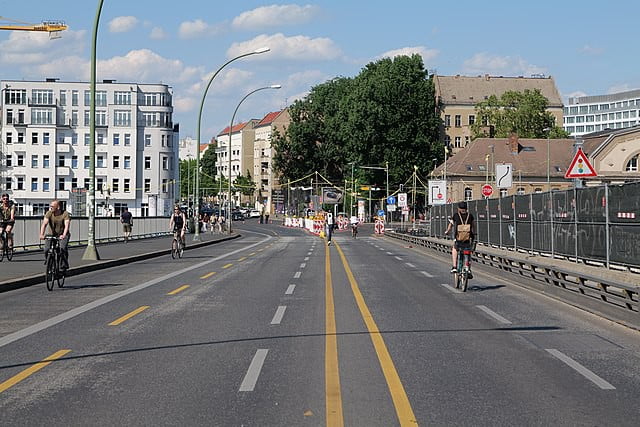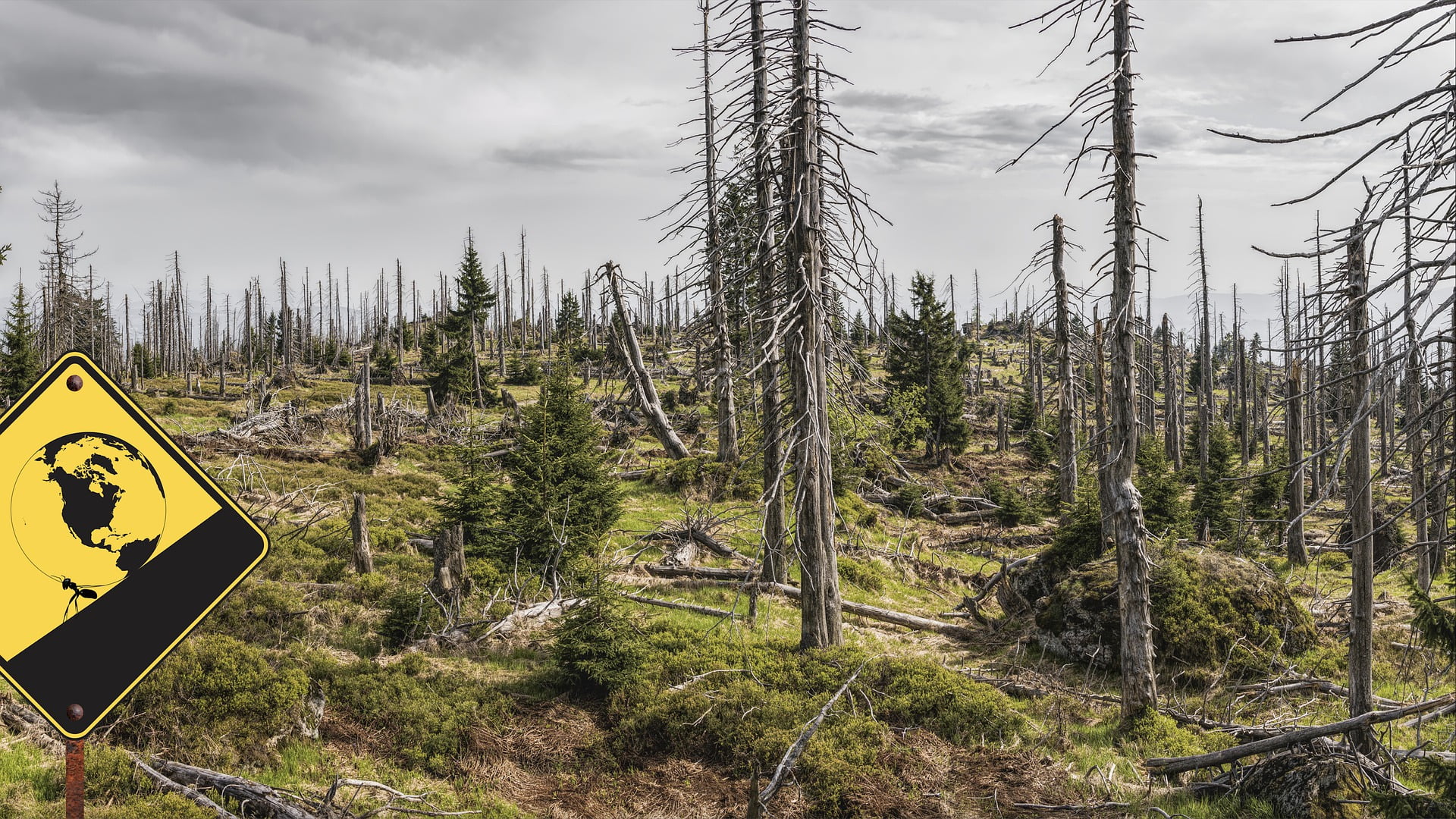Climate Change is just a small part of the whole

So you do not want to believe the people you call doomsayers. You still want to entertain the idea, that COP27 actually delivered some results. You might even believe the promise of green capitalism. That we can continue to keep growing our consumption but in a green way. That’s fair. Because it would be inconvenient to face the fact that we humans screwed up. That we are crossing multiple planetary boundaries at the same time.
But that isn’t even the worst part. It would be even more inconvenient to find out, that we no longer can reverse the damage. That all there is to do is to prepare for the worst and hope that some of us make it. Imagine, if the damage we did had serious compounding effects. How bad could it get?
We don’t know. This uncertainty is difficult to deal with. I understand if you want to put your head in the sand. Block out reality and keep on smiling. Keep up the entertainment and the lavish consumption. Reality is painful. Unfortunately, I am not here to support you in this endeavor. While I do empathize with you, it is my task as a teacher to teach.
That means showing you a path to understanding reality, even if that reality is painful. Because I trust, that when we understand and accept reality, we have the capacity to change. I trust that we can go from knowing to understanding and from there to taking action.
The Idea of Planetary Boundaries Is the Most Important One to Understand Our Crisis
The concept behind the planetary boundaries was formed in 2009.
The mastermind is a Swedish Professor in Environmental Science at Stockholm University. His name is Johan Rockström.
The aim was to identify nine key processes for our planet. Each of those processes regulates the stability of the atmosphere and earth’s systems.
They then tried to determine boundaries for each process. Boundaries, which would tip them off balance. When that happens, there is a risk that they generate large-scale and abrupt changes.
If we stay within the boundaries of each of these earth processes, we are good. If we cross them, we risk experiencing unforeseen consequences. These consequences are largely irreversible.
What Are the Nine Processes?
The nine processes are:
- Climate Change
- Freshwater Change, which includes green water available to plants, as well as drinking water reserves
- Stratospheric Ozone Depletion
- Atmospheric Aerosol Loading
- Ocean Acidification
- Biogeochemical flows, such as the nitrogen and phosphorus cycle
- Novel Entities, which include pollution by man-made objects and chemicals, such as plastics
- Land system change, which includes loss of habitat, and destruction of ecosystems on land
- Biosphere Integrity, which includes loss of biosphere due to extinction
Okay, that is a mouthful. I admit it. But we are not quite done. The real eye-opener is, that everything is linked. Everything affects each other. Changes in the land system affect the integrity of the biosphere. Pollution from chemicals affects the freshwater cycles.
This in turn affects the biosphere, and so on.
Now, remember that we are good as long as we don’t cross any boundaries. If we stay within the safe zone, we can keep doing what we are doing. For generations to come. Phew! That’s a relief! So, without further ado, I present you the latest status of the nine planetary boundaries. This chart is from April 2022.

Six Planetary Boundaries Crossed, Three to Go
Now that is a shocker, isn’t it? We already crossed six of the nine boundaries. This is not the hopeful message we were all waiting for. We really are screwed. Now, of course, I have simplified things here for the sake of the article. Not all these boundaries are as fixed as the graphic shows. But the main idea is, that our earth’s systems have thresholds.
These thresholds can and will have unforeseen consequences when we exceed them. Most of these systems are not static but feed into each other. Our Planet is a complex entity. That means that the consequences of degrading earth’s systems are complex to predict.
If you want to dive deep into the research, visit the Stockholm Resilience Centre website.
What Does This Mean in the Real World?
Let me give you some examples.
- PFAS chemicals are threatening the safe drinking water supply in many industrialized countries. These are fluoride agents. They are often used in fire extinguishing foam, plastics, and consumer goods. The evidence shows, that ingesting even small doses carries significant risks. Among these risks are cancer, reproductive health, and immune system harm.
- We are right now witnessing a sixth mass extinction. When species go extinct, this often leads to more extinction, as all species within an ecosystem are dependent on each other. Currently, the rate is 25 times higher than the normal background extinction.
- Despite lofty pledges from our leaders, carbon dioxide in our atmosphere keeps rising. We are still every bit as dependent on fossil fuels, as always. The current levels are at 419 ppm, as of October 2022. There is no indication, that this trend will change anytime soon.
- In February, we exceeded the boundary for novelæ entities. This is mainly due to extreme plastic pollution. Microplastics can even be found in Antarctica.
Okay, then. So much for the planetary boundaries. I am guessing that this outlook is not exactly a great motivator to start from. It is all hopeless, isn’t it?
We Cannot Reverse. But We Can Still Change the Outcome
We can still do something. Yes, human civilization will suffer irreversible consequences. People are going to pay with their lives. We will not be able to uphold the lavish western lifestyle, that we have become accustomed to.
Producing enormous amounts of waste will need to be a thing of the past. Changing to a circular economy is a must. It will happen. Even if we resist. Because there are no other possibilities. If the resources are out, they are out. That’s it. What we can influence is how hard the fall will be. And we can still secure, that the transition to a new equilibrium will be as soft as possible.
We can still act as individuals. By deciding not to support the capitalist exploitation of land, humans, and ecosystems. We do that by not buying shit we don’t need. We can increase the longevity of the items we use. And we can opt to reduce, reuse, and recycle.
We can continue to demand more from our leaders. We shouldn’t expect too much from them, though. They have failed us in the past, and they will fail us again. So we also need to take leadership ourselves. In our local communities. In our cities. And in our workplaces and schools.
We can teach our children to farm and care for what little nature we have left. We can encourage our youngsters to take stewardship of our planet, and its resources.
Let us be steadfast in demanding and promoting peace and collaboration. The military is the largest polluter on our planet.
In other words, we can sow the seeds for a brighter future. That future may not be tomorrow. Tomorrow will likely be very dark. But there is still the day after.




